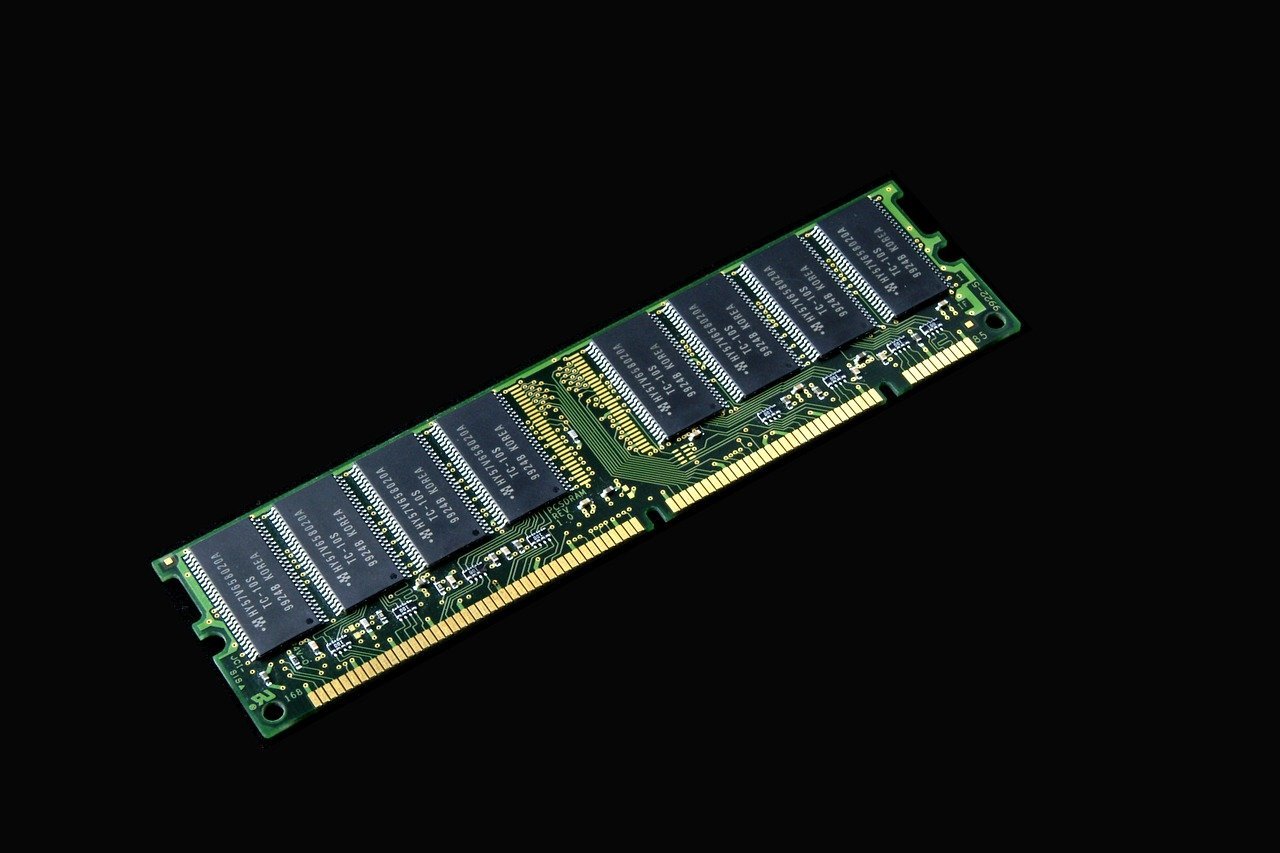Here’s a detailed explanation of RAM (Random Access Memory) and ROM (Read-Only Memory), their functions, differences, and roles in computing.
RAM (Random Access Memory)
Definition
RAM is a type of volatile memory used in computers and other devices to temporarily store data that is actively being used or processed. It allows for quick read and write access, which is crucial for the efficient operation of applications and the operating system.
Characteristics of RAM
- Volatile: RAM loses all stored data when the power is turned off. This is in contrast to non-volatile memory, which retains data without power.
- Speed: RAM is significantly faster than both hard drives and ROM. It enables quick access to data, allowing the CPU to read and write data rapidly.
- Capacity: Modern computers typically have several gigabytes (GB) of RAM, which can range from 4GB to 64GB or more, depending on the system requirements.
Types of RAM
- DRAM (Dynamic RAM): Most common type of RAM used in PCs. It needs to be refreshed thousands of times per second to maintain data.
- SRAM (Static RAM): Faster and more expensive than DRAM, it doesn’t need to be refreshed as often. Used in cache memory for CPUs.
- SDRAM (Synchronous DRAM): A type of DRAM that is synchronized with the system clock, allowing for faster data access.
- DDR SDRAM (Double Data Rate SDRAM): An advanced version of SDRAM that can transfer data on both the rising and falling edges of the clock signal, effectively doubling the data transfer rate.
Function of RAM
- Temporary Storage: RAM stores data that is being actively used by the CPU. This includes the operating system, applications, and data currently in use.
- Multitasking: More RAM allows a computer to run multiple applications simultaneously without slowdowns. Each application requires a certain amount of memory to function efficiently.
Importance of RAM
- Performance: Sufficient RAM enhances the speed and responsiveness of a computer. Insufficient RAM can lead to sluggish performance and increased load times.
- Gaming and Graphics: High-performance applications, such as video games and graphic design software, often require substantial amounts of RAM to run smoothly.
ROM (Read-Only Memory)
Definition
ROM is a type of non-volatile memory that is used to store firmware—permanent software programmed into a read-only memory chip. It retains data even when the power is turned off.
Characteristics of ROM
- Non-volatile: Data stored in ROM remains intact even without power.
- Speed: ROM is slower to read than RAM, but it is faster than many traditional storage devices (like hard drives).
- Limited Write Cycles: Traditionally, ROM can only be written to a limited number of times, which is why it’s used for permanent storage of firmware.
Types of ROM
- PROM (Programmable ROM): Can be programmed once after manufacturing.
- EPROM (Erasable Programmable ROM): Can be erased and reprogrammed using ultraviolet light.
- EEPROM (Electrically Erasable Programmable ROM): Can be erased and reprogrammed electrically, allowing for more flexibility than EPROM.
- Flash Memory: A type of EEPROM that is widely used for storage in USB drives and SSDs. It can be rewritten and is used for storing firmware in many devices.
Function of ROM
- Firmware Storage: ROM stores the firmware that initializes and controls hardware during the booting process. This is essential for the computer to start up and function properly.
- Boot Process: During the power-up process, the BIOS (Basic Input/Output System) or UEFI (Unified Extensible Firmware Interface) stored in ROM runs diagnostics and loads the operating system from secondary storage.
Importance of ROM
- Stability: Since ROM is non-volatile, it provides a stable environment for critical instructions that must be retained even when the device is powered off.
- Security: ROM can protect essential software from being easily modified or deleted, which helps maintain system integrity.
Key Differences Between RAM and ROM
| Feature | RAM | ROM |
|---|---|---|
| Type | Volatile | Non-volatile |
| Speed | Fast | Slower than RAM |
| Function | Temporary data storage | Permanent firmware storage |
| Write Cycles | Read and write many times | Limited write cycles |
| Use Cases | Running applications, multitasking | Boot process, firmware |
Conclusion
In summary, RAM and ROM play vital roles in a computer’s architecture. RAM provides the necessary speed and temporary storage for active processes, while ROM ensures that essential firmware is retained and accessible for booting and system management. Understanding these two types of memory is crucial for anyone looking to delve deeper into computer science and technology.


